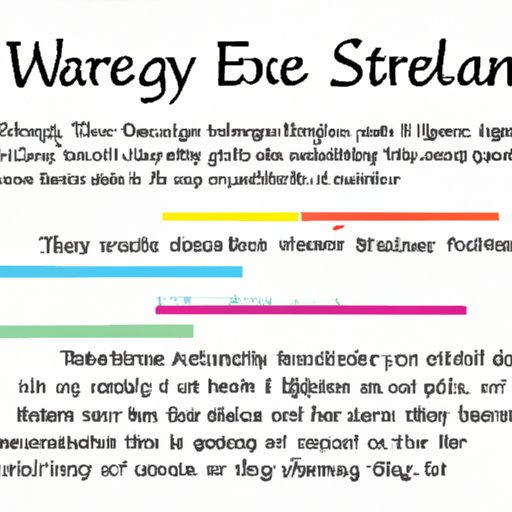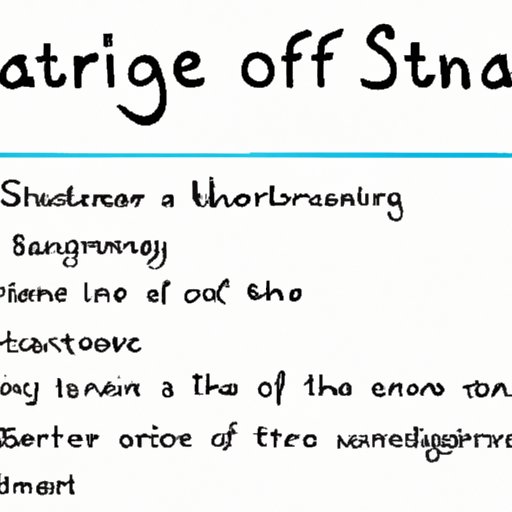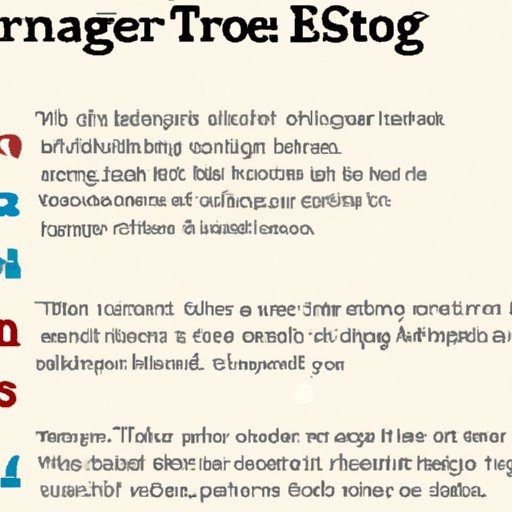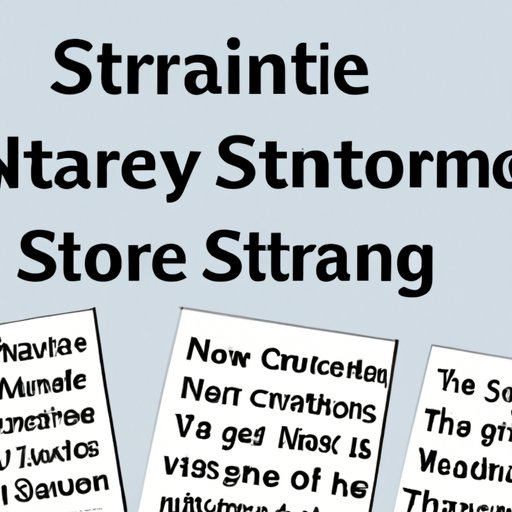Introduction
Narrative writing is a form of storytelling that can be used in many different ways. It’s a great tool for authors, poets, playwrights, screenwriters, and journalists, as well as regular people who just want to tell their stories. In this article, we’ll explore what narrative writing is, the elements it includes, and different types of narrative writing. We’ll also look at some examples and tips for creating engaging pieces.
Defining Narrative Writing: What is it and How to Create it
So, what is narrative writing? Narrative writing is a form of writing that uses characters and events to tell a story. It often has a plot, setting, and point of view. It’s used to convey a moral lesson or provide entertainment. It can also be used to educate or inform the reader.
A narrative writing piece typically contains several components. These include a plot, setting, characters, conflict, resolution, and theme. The plot is the main action of the story. It follows a sequence of events and typically has a climax and conclusion. The setting is the time and place where the story takes place. Characters are the people or animals involved in the story. Conflict is the struggle between opposing forces in the story. Resolution is the way the conflict is resolved. And finally, the theme is the underlying message or idea of the story.
Creating an effective narrative piece involves a few key techniques. One is to use vivid language to paint a picture in the reader’s mind. Another is to develop strong characters with unique personalities and motivations. Showing rather than telling is also important, as it allows the reader to make their own connections and draw their own conclusions. Finally, keeping the reader engaged with twists and turns in the plot can help to create an engaging piece.

Breaking Down the Elements of Narrative Writing
Now that we’ve discussed what narrative writing is, let’s take a closer look at the elements of narrative writing. Character development is important in any narrative piece. Characters should have unique personalities and goals that drive them through the story. Plot structure is also key. It should have a logical progression of events leading up to a climax and resolution. Setting is another element to consider. Where and when does the story take place? Point of view is also important. Is the story told from a first-person perspective or a third-person perspective? Finally, theme is a crucial element. What is the underlying message or idea of the story?

Exploring the Different Types of Narrative Writing
There are many different types of narrative writing. Short stories are brief pieces of fiction that typically focus on one central character and a single event. Novels are longer works of fiction that can contain multiple characters and plotlines. Autobiographies are non-fiction accounts of a person’s life written by that person. Memoirs are similar to autobiographies, but they focus more on specific events and experiences rather than a full life story. Plays are scripts that are meant to be performed. And finally, screenplays are scripts specifically written for movies or television shows.
Examples of Narrative Writing and its Benefits
Narrative writing can be used for many purposes. It can entertain, educate, and even inspire. Its benefits include providing readers with insight into new perspectives and experiences, allowing readers to connect with characters, and helping readers to think more critically about the world around them. Some examples of effective narrative pieces include J.K. Rowling’s Harry Potter series, Harper Lee’s To Kill a Mockingbird, and Ernest Hemingway’s The Old Man and the Sea.

Tips for Crafting an Engaging Narrative Piece
If you’re looking to write your own narrative piece, there are a few tips to keep in mind. First, use vivid language to paint a picture in the reader’s mind. Second, establish strong characters with unique personalities and motivations. Third, show rather than tell. Fourth, keep the reader engaged with unexpected twists and turns in the plot. Finally, end the story with a satisfying resolution.
Conclusion
In conclusion, narrative writing is a form of storytelling that can be used for many purposes. It includes elements such as characters, plot, setting, point of view, and theme. There are many different types of narrative writing, including short stories, novels, autobiographies, memoirs, plays, and screenplays. Examples of effective narrative pieces include J.K. Rowling’s Harry Potter series, Harper Lee’s To Kill a Mockingbird, and Ernest Hemingway’s The Old Man and the Sea. When crafting your own narrative piece, use vivid language, establish strong characters, show rather than tell, and keep the reader engaged. With these tips, you can create an engaging narrative piece.
(Note: Is this article not meeting your expectations? Do you have knowledge or insights to share? Unlock new opportunities and expand your reach by joining our authors team. Click Registration to join us and share your expertise with our readers.)
